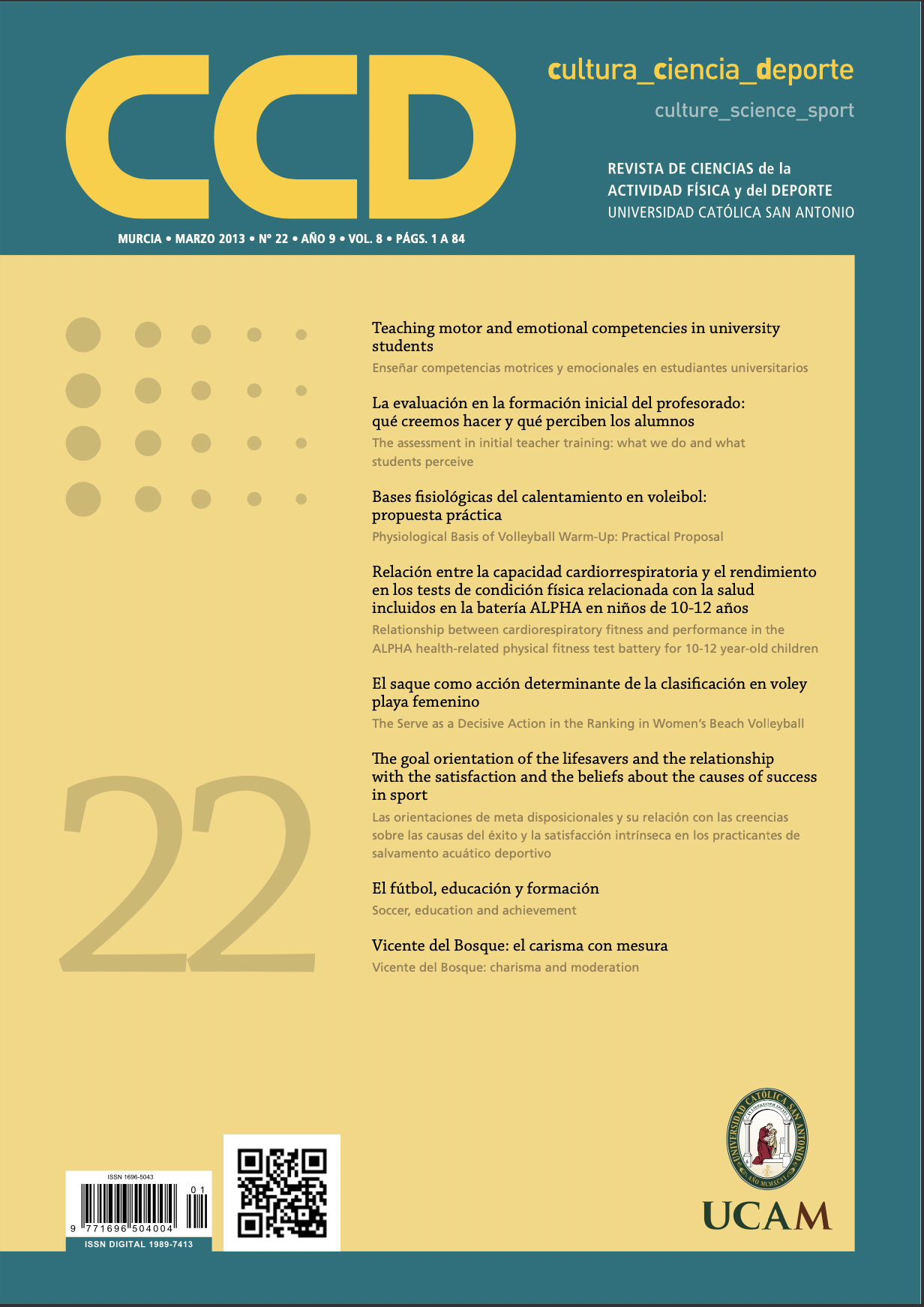La evaluación en la formación inicial del profesorado: qué creemos hacer y qué perciben los alumnos. (The assessment in initial teacher training: what we do and what students perceive).
DOI:
https://doi.org/10.12800/ccd.v8i22.220Abstract
http://dx.doi.org/10.12800/ccd.v8i22.220
La literatura científica que determina diferencias sustanciales entre lo que los alumnos perciben en y con la evaluación y lo que el profesor pretende con ella es relativamente abundante. El presente estudio complementa estas investigaciones, concretando algunos aspectos fundamentales de la evaluación, tales como coherencia y correspondencia del sistema de evaluación y programa, frecuencia de información sobre aprendizajes, capacidades evaluadas, frecuencia de utilización de distintos procedimientos de evaluación, grado de acuerdo con enunciados sobre evaluación y cómo se establece la calificación en las asignaturas. Para ello, se ha encuestado a 171 alumnos y 26 profesores de tres universidades del sureste español, comparando su percepción (prueba t de Student). Los resultados indican que, en la mayor parte de los casos, la percepción de profesores y alumnos ante una misma afirmación es estadísticamente diferente, siendo frecuentemente más optimistas los profesores. Las mayores discrepancias aparecen en la alineación sistema docente-método de evaluación, correspondencia programa-sistema de evaluación, frecuencia de información de aprendizajes alcanzados, presencia de distintas capacidades cognitivas en la evaluación, y que la evaluación genera tensión en el alumnado. Se ha encontrado cierto acuerdo en la importancia de capacidad cognitiva en el sistema de enseñanza y la frecuencia en la utilización de algunos procedimientos de evaluación. El estudio confirma las discrepancias encontradas por otros autores y muestra el potencial de este tipo de análisis para la reflexión y mejora docente. Pone de manifiesto la necesidad de mejorar la comunicación profesor-alumno para minimizar los riesgos de las incoherencias encontradas.
Palabras clave: Educación Superior, evaluación, percepción del profesorado, percepción del alumnado.
===
Abstract
Scientific literature that determines differences between the students’ and teacher’s perception about assessment is relatively ample. The present study complements this research, specifying some key aspects of assessment, such as coherence and consistency of the assessment system and program, frequency of information on learning process, skills assessed, frequency of use of different assessment procedures, and degree of agreement between statements about assessment and how grades are established in classes. Therefore, 171 students and 26 professors from three universities in south-eastern Spain were surveyed, in order to compare their perception (Student’s t-test). Results indicate that, in most cases, the perceptions of professors and students regarding the same statement are statistically different, as frequently professors are more optimistic. The largest discrepancies appear when relating educational system - method of assessment, consistency of the program - assessment system, frequency of information on learning achieved, the presence of different cognitive abilities in assessment, and that evaluation stresses students. We have found some agreement on the importance of cognitive ability in the education system and the frequency of use of certain assessment procedures. The study confirms the discrepancies found by other authors and shows the potential of this type of analysis with regard to reflection and improved teaching. It highlights the need to improve teacher-student communication so as to minimise the risk of inconsistencies.
Key words: Higher Education, assessment, teachers’ perceptions, students’ perceptions.
Downloads
How to Cite
Issue
Section
License
The authors who publish in this journal agree with the following terms:
- The authors retain the copyright and guarantee the journal the right to be the first publication of the work as well as licensed under a Creative Commons Attribution License that allows others to share the work with recognition of the authorship of the work and the initial publication in this journal.













